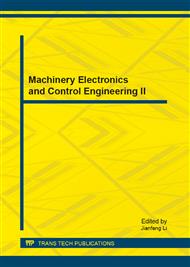p.865
p.870
p.876
p.882
p.887
p.891
p.896
p.903
p.908
New Method to Identify Transformer Inrush Current Based on FFT and SVM
Abstract:
To improve transformer longitudinal differential protections reliability, this paper deeply analyzes generation mechanism and characteristic of transformer inrush current, and uses PSCAD/EMTDC software to simulate 188 kinds of transformer operation states. They are including internal fault current, inrush current and no-load closing with internal fault. On the background of those simulations, it proposes a simple and accurate method to identify inrush current based on SVM. SVM selects Gaussion Kernel, and takes three-phase differential current, fundamental, secondary harmonic and third harmonic as characteristic quantities. Many cross-validation results verify that the training SVM has high accuracy. This method can identify inrush current and internal fault current (including no-load closing with internal fault current) rapidly and accurately. It takes less time, and is easy to perform.
Info:
Periodical:
Pages:
887-890
Citation:
Online since:
March 2013
Authors:
Price:
Сopyright:
© 2013 Trans Tech Publications Ltd. All Rights Reserved
Share:
Citation:


